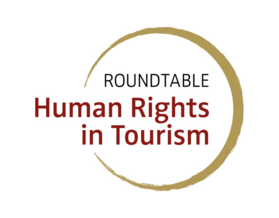The United Nations call them SIDS (Small Island Development States); they prefer to call themselves "Large Ocean States". For the tourism industry, they are simply synonymous with tropical paradises. 38 states and 20 territories in the Caribbean, the Pacific and on both sides of the African continent fall under the category of SIDS. They have in common, that their geographical remoteness imposes high costs in the procurement of food and other goods and limits their economic development. The remoteness of the islands has also preserved social traditions and natural resources; the islands are spiritual and ecological hotspots. At the same time, the climate crisis is hitting the 65 million people living on the SIDS hardest in the form of sea-level rise and hurricanes.
Tourism is the main economic pillar of most SIDS. On some of them tourism accounts for 80 percent of their exports and more than 20 percent of their GDP. The COVID-19 pandemic had particularly strong economic effects because the islands were not able to compensate the absence of travelers with other economic activities. Three years after the pandemic started, we take a closer look the current tourism concepts of the SIDS: The Dominican Republic seems to continue to rely mainly on mass tourism, while the West African Cape Verde wants to diversify but faces many burdens. In the Maldives, tourism has led to high revenues, but its absence has pushed the national debt to new records, which seems to make an economic turnaround impossible. And while some Pacific countries have suffered greatly from economic slumps during the COVID-pandemic, spiritual, social and environmental resources prevented the worst. This experience gives confidence in the resilience of states and their people against future crisis. Our interview with Megan Epler Wood shows how important such resources are and what invisible costs occur when they are impaired by tourism development.


![[Translate to english:] Mann mit Mülltonne](/fileadmin/tourismwatch/_processed_/e/4/csm_tom-jur-oIH1-Pqeg-A-unsplash_0_46c7d23bbc.jpg)
![[Translate to english:] Mann sitzt am Meer](/fileadmin/tourismwatch/_processed_/8/7/csm_raul-de-los-santos-xeulIueR-FI-unsplash_2_a1079b3f0c.jpg)
![[Translate to english:] Insel](/fileadmin/tourismwatch/_processed_/d/1/csm_shifaaz-shamoon-AAFH_AADpRg-unsplash_0_a6da118238.jpg)
![[Translate to english:] Frau mit Kind auf FAhrrad](/fileadmin/tourismwatch/_processed_/2/a/csm_Pazifik_0_148d2c7609.png)
![[Translate to english:] Fischerboote](/fileadmin/tourismwatch/_processed_/0/c/csm_andreea-munteanu-xc_bp_SyhEI-unsplash_fc702081d0.jpg)
![[Translate to english:] Computer](/fileadmin/tourismwatch/_processed_/5/8/csm_john-schnobrich-FlPc9_VocJ4-unsplash_f4703f8594.jpg)
![[Translate to english:] World Heritage Watch 2022](/fileadmin/tourismwatch/_processed_/9/7/csm_Cover_World_Heritage_Watch_12_2022_0d391caebd.png)
